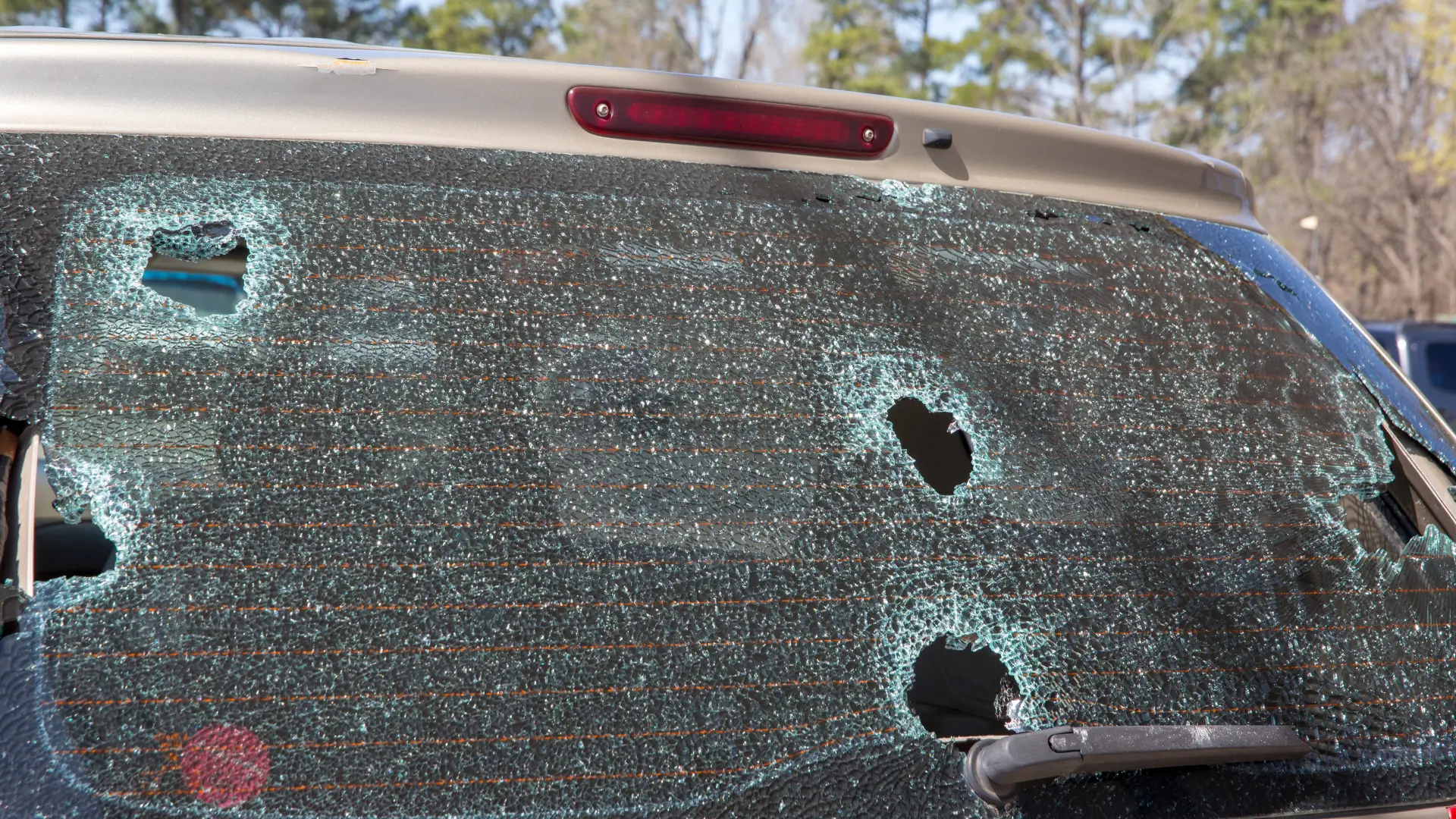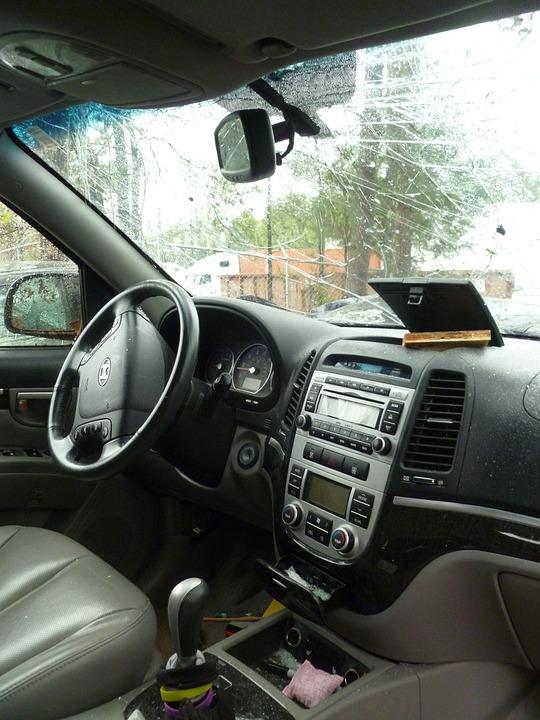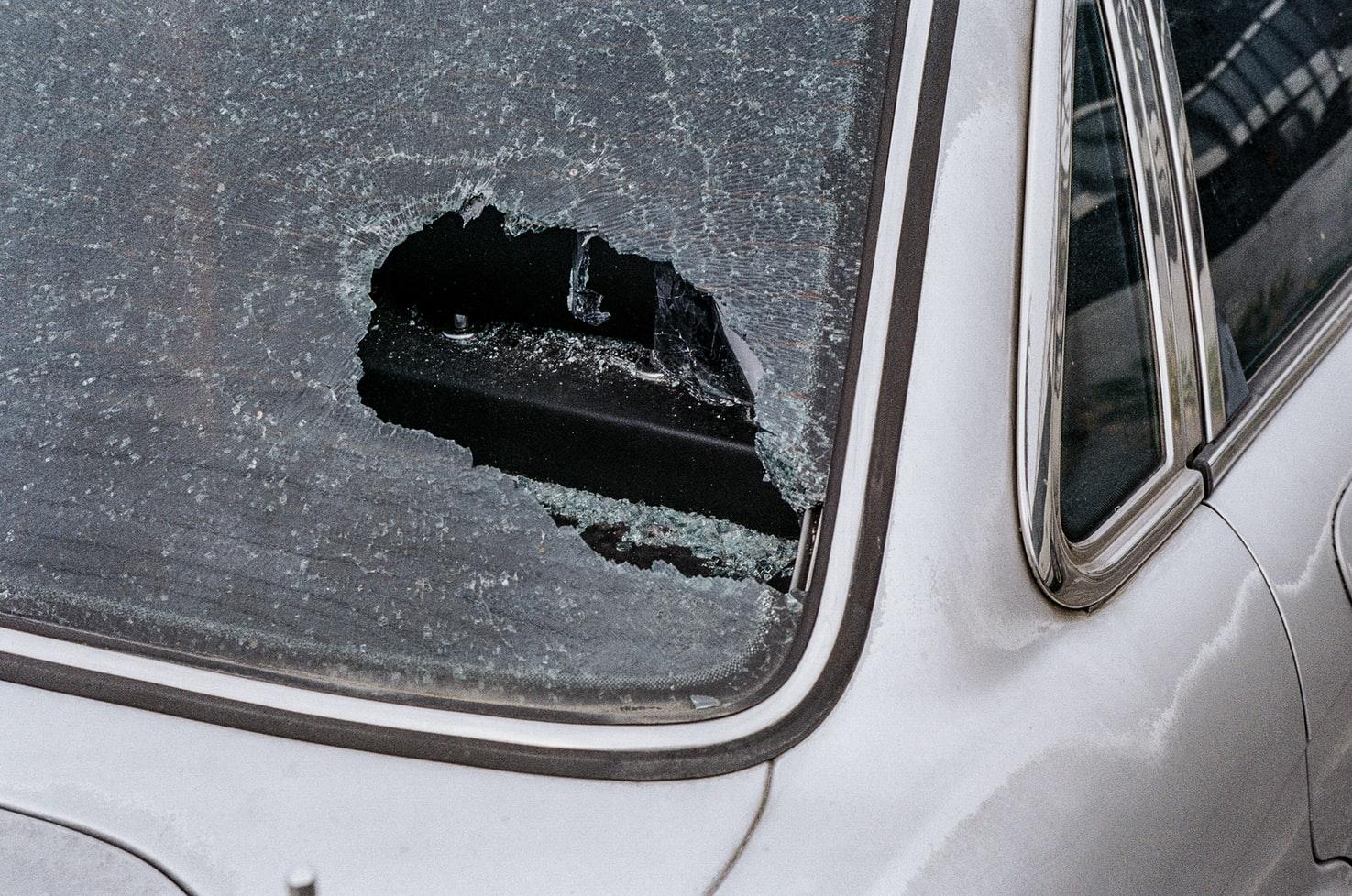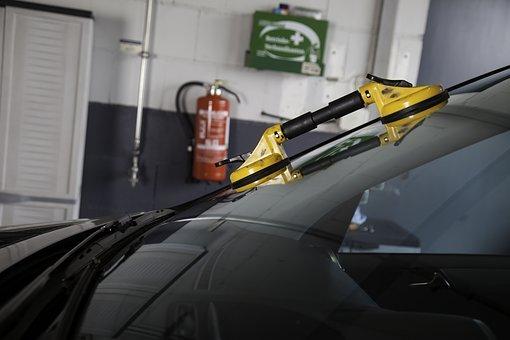If you’re driving a car with a cracked windshield, regardless of the size of the crack or chip, it will distract you while driving as it affects visibility. Windshields are crucial for driving safety, providing visibility and protection. Understanding what can damage them is key to maintaining their integrity and your safety. Here we explore seven common factors that can harm your windshield.
Sources That Can Damage Your Windshield
As a driver, you should be familiar with windshield damages and how to avoid them. So, let’s take a look at the things you should be on the lookout for that can damage your windshield.
1. Road Debris And Gravel
Debris and gravel are among the leading causes of windshield damage. As gravel or debris hits the windshield while driving, it creates tiny scratch marks. The risk of damage from road debris is particularly high on highways and busy roads where vehicles travel at higher speeds. High velocity increases the impact force when debris hits the windshield, making even small objects potent enough to cause harm and can severely damage your windshield. Similarly, driving on unpaved roads or near construction zones can raise the likelihood of encountering harmful debris.
However, there are effective strategies to minimize the risk of such damage. One key approach is to maintain a safe following distance from other vehicles, especially large trucks or vehicles carrying loads that might not be properly secured. This added space provides more time to react and reduces the chances of debris hitting the windshield.
Additionally, avoiding driving behind construction vehicles or trucks carrying loose materials whenever possible can significantly reduce the risk. If changing lanes or adjusting the driving route is not feasible, slowing down and increasing the following distance is advisable. Moreover, having windshield protection, like a quality glass treatment or a windshield protection film, can provide an additional layer of defence against road debris. These treatments can strengthen the windshield and help resist the impact of flying debris, extending the life of your windshield.
2. Hail Storms

Hailstorms, characterized by their sudden occurrence and unpredictable intensity, pose a significant threat to vehicle windshields. These ice pellets, varying in size from small pebbles to large, golf-ball-sized chunks, can fall at high speeds, causing substantial damage upon impact. The severity of the damage largely depends on the size of the hail and the duration of the storm.
Small hailstones might only leave minor nicks or chips in the glass, but larger ones can lead to serious cracks or even shatter the windshield completely. This not only compromises the structural integrity of the windshield but also impairs the driver’s visibility, which is critical for safe driving.
Damages done by hail storms can be difficult to avoid due to sudden weather changes. Damage due to hail storms can range from fixable to serious damages. The Institute for Catastrophic Loss Reduction illustrates a major rise in hail occurrence in Alberta. One of the most effective strategies is to keep the vehicle under cover as much as possible, especially when hail is forecast. This could mean parking in a garage, under a carport, or even beneath a sturdy tree if other options are not available. For those who frequently park outdoors, investing in a quality hail car cover can be a wise decision. These covers provide a padded shield over the vehicle, absorbing the impact of hailstones.
3. Accidents and Collisions
Accidents can vary from situation to situation like a baseball hitting your car or a major car accident can damage your windshield. While some car accidents cannot be avoided, it’s better to be cautious. In in case of everyday accidents, it is advised to park your car in a safe spot. Even minor accidents can impact the windshield’s integrity. Adhering to safe driving practices is essential to prevent such occurrences.

Avoid The 7 Things that can damage your windshield
4. Improper Cleaning Methods Can Damage Your Windshield
Windshield maintenance is crucial for clear visibility and overall vehicle safety, yet many are unaware of how improper cleaning methods can damage this essential component. The use of inappropriate cleaning agents and materials can lead to scratches, weakening, and even chemical damage to the windshield.
One common mistake is using household glass cleaners that contain ammonia. While effective on household windows, these cleaners can be harsh on automotive glass and windshield coatings. Ammonia-based cleaners can degrade the windshield’s tint and damage anti-glare coatings, reducing visibility and the windshield’s protective qualities.
Abrasive cleaning tools, such as scouring pads or brushes with hard bristles, can also be detrimental. They can leave fine scratches on the surface, which over time, may lead to more significant cracks or weaken the glass structure. Even regular paper towels can be too harsh for windshields, potentially causing minute scratches.
The environment in which you clean the windshield also plays a role. Cleaning a windshield under direct sunlight can lead to streaks or uneven cleaning. The heat causes cleaning solutions to evaporate quickly, leaving residues behind. This not only affects visibility but also attracts more dirt and grime.
Furthermore, wiping dirt or sand off a dry windshield is a recipe for scratches. Always rinse the windshield with water before wiping to remove these particles. Using a soft microfiber towel or a squeegee is advisable for drying and cleaning the windshield. These materials are gentle on glass and effective in preventing streaks.
In terms of cleaning solutions, it’s best to use cleaners specifically designed for automotive glass. These formulas are tailored to be gentle on the windshield and its coatings while effectively removing dirt and grime. For those preferring a more natural approach, a mixture of vinegar and water can be a safe alternative.
5. Poor Installation
A windshield does more than just provide a clear view of the road; it’s an integral part of a vehicle’s structural integrity and safety system. Poor installation of a windshield can lead to a host of problems, compromising both safety and vehicle performance. Understanding the risks associated with poor installation is crucial for vehicle owners.
One of the primary issues with poorly installed windshields is the increased likelihood of leaks. Improperly sealed windshields can allow water and air to enter the vehicle, leading to interior water damage, annoying whistling noises while driving, and a decrease in the effectiveness of the heating and cooling systems.
Another significant concern is the reduced structural integrity. The windshield contributes to the overall strength of the vehicle, especially in the event of a rollover or frontal collision. A poorly installed windshield may pop out or shatter more easily upon impact, compromising the vehicle’s structural stability and putting the occupants at greater risk.
Windshield installation requires precision and expertise. If the adhesive used to secure the windshield is not applied correctly or is of poor quality, it can fail to bond the glass properly to the vehicle frame. This can result in the windshield becoming loose or even detaching, particularly under the stress of a collision or when driving at high speeds.
In addition to safety risks, poor installation can also lead to increased road noise and a decrease in fuel efficiency due to air leaks. The aerodynamics of the vehicle can be affected, leading to higher wind resistance and, consequently, reduced fuel economy.
The signs of a poorly installed windshield include visible gaps between the windshield and the car frame, noticeable rattling noises, and air drafts near the edges of the windshield. If you suspect that your windshield has been poorly installed, it is crucial to have it inspected and, if necessary, reinstalled by a professional. Choosing a reputable and experienced auto glass technician is key to ensuring that your windshield is installed correctly and safely.
6. Low Quality Glass
When it comes to windshields, the quality of the glass used is of paramount importance. Low-quality glass poses numerous risks, not only to the vehicle’s integrity but also to the safety of its occupants and others on the road. Understanding these risks can help car owners make informed decisions when replacing or repairing their windshields.
One of the main concerns with low-quality glass is its reduced durability. Inferior glass is more prone to cracking and chipping, even from minor impacts like small stones or road debris. This susceptibility leads to frequent repairs or replacements, which can be costly over time. Additionally, low-quality glass often lacks the structural strength to adequately support the car’s roof in case of a rollover accident, increasing the risk of severe injuries.
Comprised Effectiveness Of ADAS
The effectiveness of advanced driver assistance systems (ADAS), such as lane departure warnings and automatic emergency braking, can also be compromised by low-quality glass. These systems often rely on cameras and sensors that are mounted to the windshield. If the glass is not of the required standard, it can affect the accuracy and reliability of these systems, thereby diminishing the vehicle’s safety features.
7. Change in Temperature and Pressure
Windshields are engineered to withstand a variety of environmental conditions, but extreme temperature changes can pose significant challenges. The effect of these temperature fluctuations on windshields is a concern every vehicle owner should be aware of, as it can damage your windshield and compromise safety. In areas with severe cold or hot climates, windshields are particularly susceptible to damage. The glass expands in hot weather and contracts in cold weather. This constant cycle of expansion and contraction can cause stress to the windshield, leading to the development of small cracks or the worsening of existing ones. In winter, the use of defrosters can exacerbate this issue. Rapidly heating a cold windshield can cause thermal stress, potentially leading to cracks. It’s advisable to gradually warm the vehicle’s interior to minimize this risk.
How to Avoid Temperature Changes That Can Damage Your Windshield
In Hot Climates:
Prolonged exposure to intense sunlight can not only heat the windshield but also cause its frame to expand. This expansion can put additional pressure on the glass, leading to cracks or breaks, especially if there are already weakened areas or small chips. Using sun shades when parking outdoors, or parking in shaded areas, can help mitigate this effect by keeping the windshield cooler.
In Cold Climates:
Pouring hot water on a frozen windshield to clear ice is a common mistake. This sudden shift from cold to hot can cause the glass to crack due to thermal shock. Instead, it’s safer to use an ice scraper or de-icer spray.
Regular Inspections Can Avoid Further Damage To Your Windshield:
Regular windshield inspections, especially when transitioning between seasons. Checking for any signs of damage, such as chips or cracks, and addressing them promptly can prevent further deterioration due to temperature changes. Using a high-quality windshield washer fluid that won’t freeze in cold temperatures can also be beneficial.
Are you noticing windshield cracks that might affect visibility? Then Schedule your windshield replacement through Crystal Glass in Alberta.
Crystal Glass offers repairs ranging from window fittings, windshield replacement, and commercial glass repair to get you back on the streets with a clear windshield.


